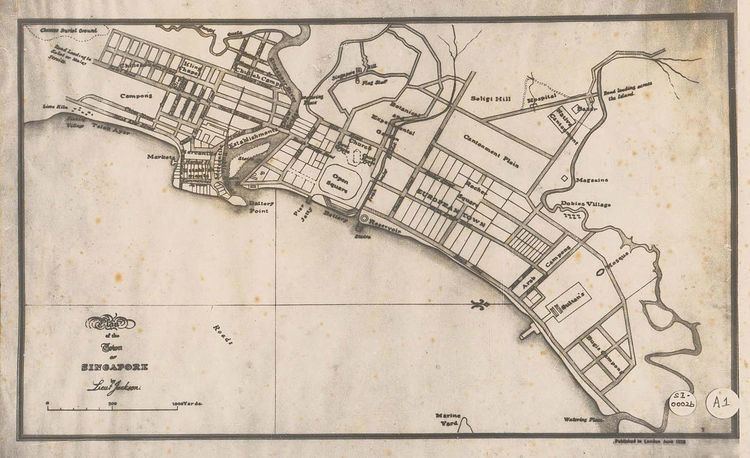 | ||
The Jackson Plan of 1822, also known as the "Plan of the Town of Singapore", was an urban plan for Singapore drawn up to maintain some order in the urban development of the fledgling but thriving colony founded just three years earlier. It was named after Lieutenant Philip Jackson, the colony's engineer and land surveyor tasked to oversee its physical development.
Originally, William Farquhar who had governed Singapore from 1819 until 1823 had allowed the colony to flourish under the sheer volume of trade that passed through her port, but had not organised the colony, and thus it grew haphazardly. Upon his return in October 1822, the colony's founder, Sir Stamford Raffles, was displeased by the disorderliness, and formed a town Committee led by Lieutenant Jackson to revise the layout plan of the city. The Jackson Plan was thus formulated, created a plan of Singapore that would divide it into ethnic functional subdivisions and lay the colony out in a grid pattern. Ethnic residential areas were to be segregated into four areas.
The European Town had residents who consisted of European traders, Eurasians and rich Asians. There was also the Chinese Kampong which is Chinatown for the ethnic Chinese, located in present-day Chinatown and south-east of the Singapore River. Little India was where ethnic Indians originally resided and was located further north of the Chinese Kampong known as Little India. Kampong Glam consisted of Muslims, ethnic Malays and Arabs who had migrated to Singapore, and was further divided into three parts, for the Bugis, the Arabs and the Sultan of Singapore.
West of the European Town were administrative and commercial districts. Just west of the River, land was taken from a hill to reclaim a small portion of land which became the Commercial Square, which was later renamed Raffles Place in Raffles' honour. This section, together with the European Town, evolved into the present-day Downtown Core.
Although the concept of racial segregation was later abandoned, the effects such as the layout of the streets and the distinction of each district still has present-day effects.
The plan is currently on display in the Singapore History Gallery at the National Museum of Singapore.
